A wave of change is coming to our planet’s water resources
Thanks to climate change, Earth’s freshwater supplies will never be the same again
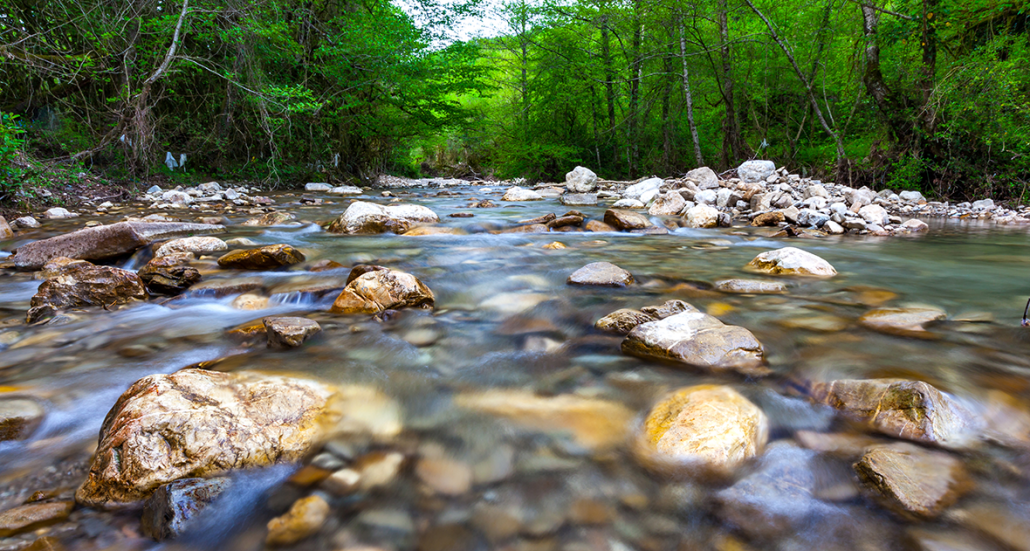
Freshwater makes up just a tiny percent of the water on Earth. Yet we depend on it for everything from growing food to manufacturing to everyday uses at home. The average American uses 340 liters (90 gallons) per day.
Valery Bocman/iStockphoto
By Beth Geiger
This is the fourth in a 10-part series about the ongoing global impacts of climate change. These stories will look at the current effects of a changing planet, what the emerging science suggests is behind those changes and what we all can do to adapt to them.
It’s January 2018 in Cape Town, South Africa. After three years of record low rainfall, reservoirs that supply this city’s water are dangerously low. The city is running out of water, and fast.
Billboards flash dire updates. They tell Cape Town’s 400,000 residents how far the reservoirs have dropped. They also display the countdown until “Day Zero:” the estimated date that Cape Town’s taps will run completely dry. Every week, Day Zero looms closer.
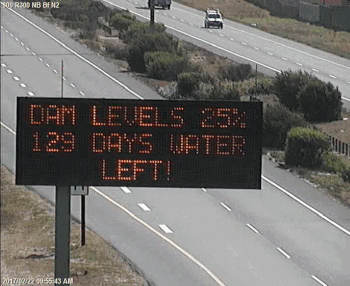
Like everyone else here, Samantha Reinders has learned to wash, flush, cook and drink using just the official daily limit — 50 liters (13 gallons). “I’d feel guilty,” she later recalled, “any time I turned the shower on even for 30 seconds.”
Reinders faced a fact of life: People cannot exist without freshwater. Neither can other animals or plants. When water becomes scarce, food and other essentials do, too. In fact, without enough freshwater, whole civilizations have crumbled. But freshwater isn’t always abundant. And as Earth’s climate changes, freshwater resources around the globe are headed for trouble. From Africa to Arizona, people are already feeling the effects. Cape Town’s water crisis offers just a glimpse of the future for us all.
Water world
Our cool blue planet is covered in water. Just 2.5 percent of that water, however, is fresh. Of that, only about one third is liquid. The rest is locked up as ice.
That isn’t much freshwater. Yet we depend on it for everything. In the United States, each person uses an average of 340 liters (90 gallons) per day at home. And that doesn’t include the water needed to grow our food or manufacture everything from clothes to cars to cell phones. It takes 3,400 liters (900 gallons) just to make one pair of jeans.
As climate changes, though, so does how much water is available. Water, climate and weather are connected in a never-ending loop called the water cycle. And like any natural system, change one part of it — whether it’s temperature, soil moisture or even how many trees are in a region — and everything else changes, too.
Scientists use powerful supercomputers to explore the complex ways that climate change is altering the water cycle. They have found that as climate warms, the atmosphere holds more water: about 4 percent more for every 1.8 degrees Celsius (1 degree Fahrenheit). That affects everything from rainfall to how soggy soils might be.
NASA’s Goddard Space Flight Center/Kathryn Mersmann/YouTube
There are also eyes in the sky. From 2002 to 2017, a satellite mission called GRACE (Gravity Recovery and Climate Experiment) tracked Earth’s water resources from above. A pair of twin satellites were able to “weigh” Earth’s water by measuring differences in how much the planet’s mass tugs at them. If the amount of snowpack, surface water or even groundwater changes, so does the pull of gravity at that location. That gravitational pull is affected by changes in mass. As the first satellite passed over an area, differences in gravity slightly changed the distance between the two satellites. Instruments on board measured that difference to within one one-hundredth of the width of a human hair. Scientists translate those subtle gravity data into water or ice mass. Then they compare it to historical data to measure changes in where water and ice are distributed over time.
Data from computers, satellites and “boots on the ground” agree. Climate change is altering the availability of water around the world. In South Africa and many regions, droughts are becoming more common. In other areas, like California and Europe, shifting precipitation patterns have caused river flows to peak earlier each year, followed by water shortages. Meanwhile, the average rainfall in the United States has actually increased by 5 centimeters (2 inches) since 1895. Most of that has been drenching New England and the Midwest.
Dry times
By March 2018, Cape Town’s biggest reservoir had dropped to just 11 percent of its capacity. The city was close to turning off the taps. “I’ve never experienced anything like it,” says Reinders. She and other Cape Town residents did all they could to conserve water. Kids carried their own water to school to wash and flush toilets. Popular bands recorded special songs that lasted exactly two minutes. They were designed to help people time their short showers. Young people delivered water from springs to elderly residents.
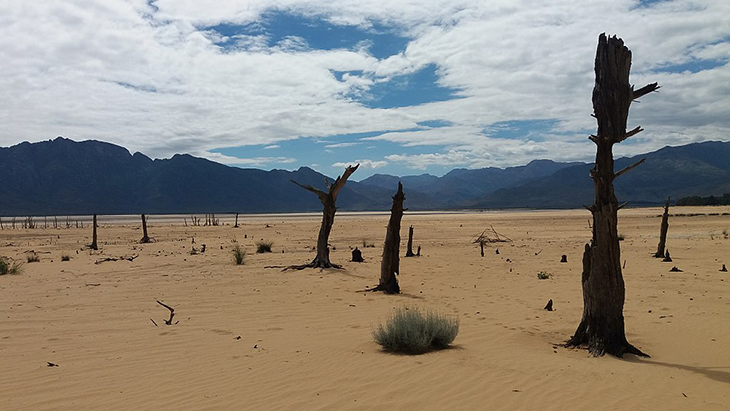
Finally, in June, the rains returned. People ran outside to feel the water splash onto their faces. Cape Town’s crisis was over, at least temporarily. Day Zero had never quite arrived.
Afterward, an international group of scientists analyzed Cape Town’s drought and water shortage. They studied computer models and rainfall records. Finally, they came to a conclusion: Climate change hadn’t caused the drought. But it had tripled the chance that a drought would occur.
Friederike Otto is a climate scientist at Oxford University in England and lead author of that study. The risk of drought could triple again by the end of the 21st century, she says. That’s when global temperatures are projected to rise another 1 degree Celsius (1.8 degrees Fahrenheit). She and her colleagues published their findings in Environmental Research Letters in fall 2018.
Co-author Piotr Wolski is a hydrologist at the University of Cape Town. He says that better planning could help in the future. The region could manage its water reservoirs more carefully. People could fix leaky dams and tap into a variety of water sources instead of only reservoirs. “Drought may or may not translate into a crisis,” he points out. Wolski adds that Cape Town offers other cities a great lesson in how they might handle water shortages. “We are at the forefront of this in the world,” he says.
In many ways, says Reinders, the water crisis brought this diverse city closer together. “Most people, across race, gender, religion and class, did their bit to save water and help their neighbor out,” she told Science News for Students. And most are sticking to the water-saving habits they learned. “I think this is the new normal. And that is pretty much the word on the street,” says Reinders.
Vanishing snowpack
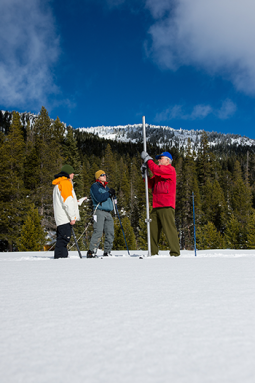
Four times each year, John King drives into California’s Sierra Nevada Mountains to measure how deep the snow is. Where the mountain road becomes blocked by snow, he parks his truck. Then he continues on skis. But over the last decade, this engineer with the California Department of Water Resources in Sacramento has noticed a change. Every year, he drives farther and skis less. Climate change is shrinking the snowpack.
Snowpack accounts for fully one-third of California’s water supply, explains David Rizzardo. He’s another water-resources engineer in Sacramento with the state’s Department of Water Resources. Rizzardo has studied 100 years of records on the Sierra Nevada snowpack. In that time, its average size has dwindled by 10 percent. Melted, that translates into enough water to supply as many as three million families for a year.
The total amount of precipitation hasn’t necessarily changed. What has is its timing.
“We’re seeing an undeniable shift,” he says. Rain continues later into the winter and comes sooner in the spring. When Rizzardo digs into the snow, he hits more ice layers. Those layers show where snow has melted during the winter. “We’re getting these giant, warm winter storms,” Rizzardo says. As a result, he notes, “There’s a ton of runoff into the reservoirs in January.”
That’s a double whammy for California. First, the rain triggers a deluge of winter floods. Second, there’s less snow to melt and fill water-storage reservoirs over the hot summer, when water is needed most. “It’s very tricky for water-resource managers,” says Rizzardo.
California is far from the only place where dwindling mountain snow and ice are causing problems. The Pacific Northwest, the Himalayas and other regions also are seeing snowpack and glaciers do a disappearing act. “Since 1982, the Olympic Mountains in Washington have lost 43 percent of their glacier cover,” says Jon Riedel. He’s a glaciologist with the National Park Service in Sedro Woolley, Wash.


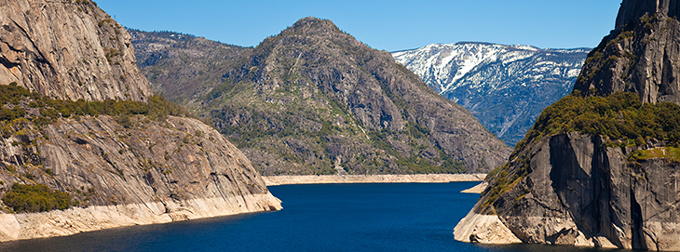
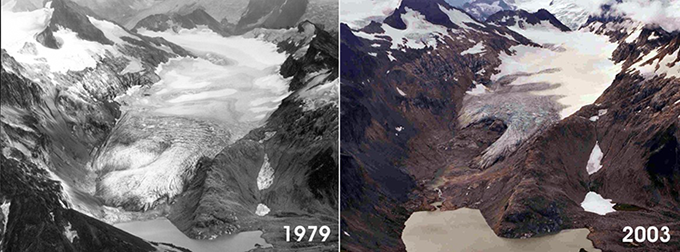
That causes a serious trickle-down effect. Some rivers in this state, for example, get 25 percent less water from melting snow and ice than they did just a few decades ago, says Riedel. This leaves less water to irrigate farms. Warmer water in rivers, and less of it, has also caused some aquatic ecosystems to nosedive.
Water-resource experts like King and Rizzardo want to help make places that depend on water from snowpacks, such as California and Washington, more resilient to climate change. They’ve made adjustments to their computer models to include climate conditions that are more changeable, King says. And water managers are adapting to more runoff in winter and less snowmelt in spring. In some places, rivers have been confined to narrow channels by human-made dikes. When a river floods, it can top the dikes and flood homes. Some river managers now are moving homes out of harm’s way, then removing the dikes so that a river’s natural floodplain now can better absorb floodwaters.
Beneath the surface
Water flowing over or pooled atop the earth is not our only supply of freshwater. Groundwater is a secret stash. Deep below the surface, where it is silent and dark and cool, groundwater fills tiny gaps in the rock and soil, like water in a sponge. Groundwater can be hidden a few meters, or a few hundred meters, below the surface.
“Groundwater doesn’t get as much attention because we don’t see it,” says Laura Condon. “It’s so much harder to get your head around than surface water,” notes this hydrogeologist, or groundwater expert. She works at the University of Arizona in Tucson. Even though we can’t see it, an astounding 1.7 percent of all water on Earth is trapped underground. It sits in reservoirs called aquifers. That’s about 60 times more water than is held in all lakes and rivers combined.
Groundwater comes from water that seeps down from the surface, a process called recharge. We depend on groundwater and on the recharge that sustains it. But that recharge happens slowly. For instance, scientists estimate that it took hundreds of thousands of years for Arizona’s stash of groundwater to accumulate.
Half of U.S. drinking water comes from groundwater. But we may need to stop gulping, and start sipping. In 2017, scientists compared aquifer levels since 1948 to more recent measurements taken by the GRACE satellite mission. They determined that of Earth’s 37 biggest aquifers, 21 are now dropping faster than they are being recharged.
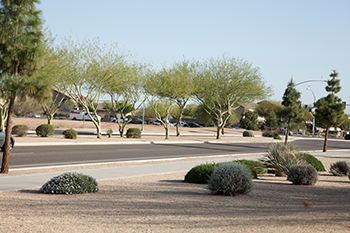
In Tucson, with an average of just 30.5 centimeters (12 inches) of rain per year (about one-third the U.S. average), groundwater is especially important. Climate change now has this dry state braced, says Condon. “We’re expecting more drought in the future,” she says. That will increase the demand for groundwater, even as its rate of natural recharge falls.
Storms are changing, too. That also affects groundwater, she points out. “It’s not just how much rain falls, but what those storms are like.” Slow rains allow enough time for water to sink into the soil, she explains. Big, sudden storms don’t give the water enough time to percolate into the ground. Instead, the rainwater races straight into streams and sewer drains.
Arizona is preparing for this uncertain future. Condon, for example, creates computer models to predict how changes in population, water use, climate, rainfall and even plants will impact Arizona’s groundwater. “We build [computer] models so we can see how everything interacts throughout the whole water cycle,” she says.
Meanwhile, conservation helps. More golf courses are irrigating their grass with recycled water — waste water that’s been treated. Homeowners are replacing thirsty green lawns with native plants and other materials that don’t require watering. About half of Tucson’s water comes from the Central Arizona Project. This system of pipes and canals brings in water from the Colorado River. When there is extra water from that project, the state fills ponds and lets the water sink into the soil to recharge its groundwater.
“Groundwater is our safety net,” explains Condon. “We need to be sure it’s there in the future.”
Future file
Could you live with just 50 liters (13 gallons) of water per day, like the residents of Cape Town? Or instead of water shortages, perhaps extreme floods, warm winter storms or dusty dry summers will be your new normal. Maybe your hometown will get more rain than you could ever use. These are all ways that climate change is altering water around the globe. No wonder the United Nations says that of all the impacts of climate change, shifting water availability is the impact people will feel most.
The good news is that around the world, people are paying attention. They are using science, imagination and even music to help adapt our watery ways to climate change.
In China, for example, engineers are creating “sponge cities.” As climate change brings more intense rainstorms and epic floods, sponge cities will soak up excess water. The “sponges” range from rooftop gardens to pavement that lets water sink in instead of running off. After a storm, as much as 70 percent of the stored water can later be re-used.
Along the coast of Africa and South America, drought-stricken communities harvest water from the fog that rolls in from the ocean. In California, South Africa and other places, water managers are rethinking ways to manage reservoirs for the long term. Governments are repairing dams and water pipes to reduce flooding and improve water storage.
Then there are the little things, like that fun shower-length song in Cape Town, or deciding that your garden will consist of rock and cactus from now on, instead of water-hungry grass and flowers. These home-grown tactics may seem like just a drop in the bucket. But they help make our world more resilient to our changing climate.
As Earth’s climate evolves, and the water cycle with it, we can’t predict exactly what will happen or where. But after living with Cape Town’s extreme water shortage, Reinders is sure of at least one thing: “No one here thinks about water like they used to,” she says. “It’s like gold now.”







